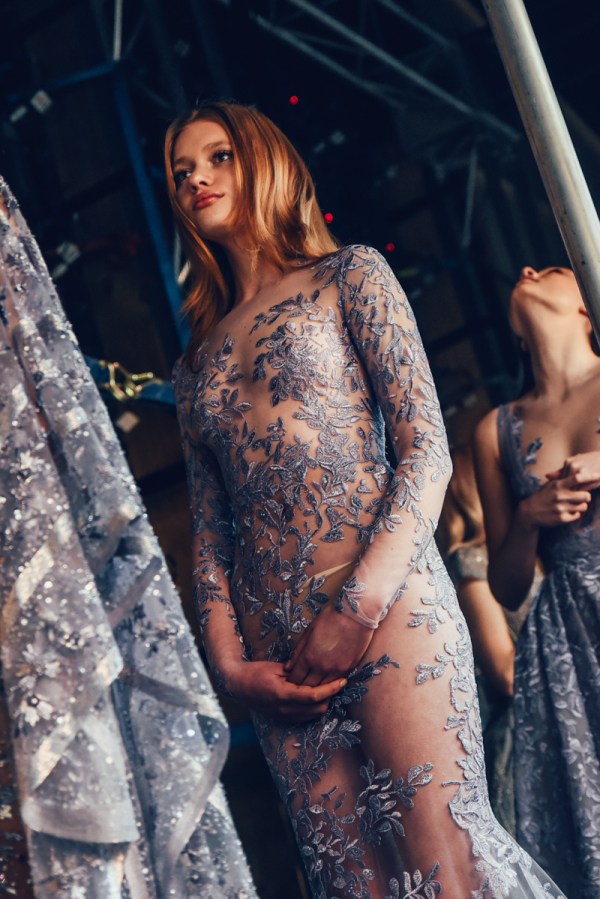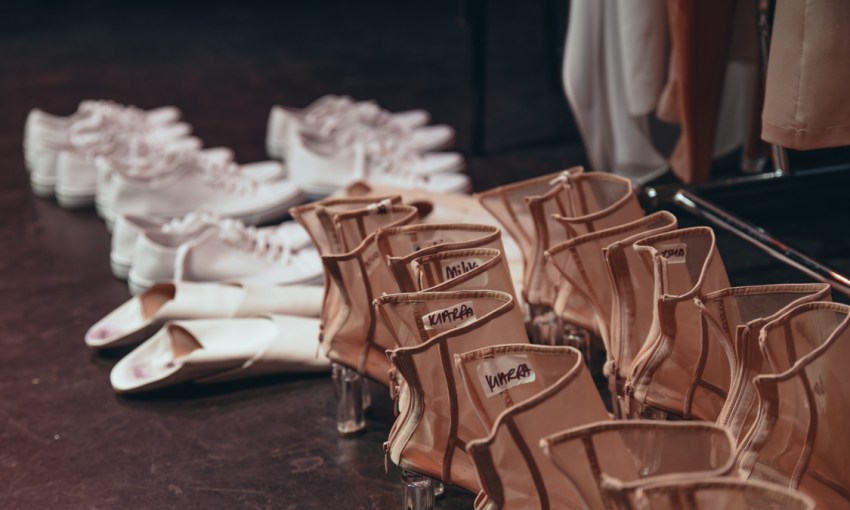The biggest brand in fashion comes to Adelaide. But the Vogue Festival is here for a good time, not a long time.
Adelaide’s fashion industry gets the Vogue approval
Adelaide’s fashion industry looks different today than it did five years ago. And, more than that, it looks vastly different to 40 years ago.
That’s not surprising – with time comes change.
Vogue Festival is part of the Adelaide Fashion Festival, and will take place across Rundle Mall from October 13-14.
Some stand out events over the weekend:
The Vogue Hub at the heart of the Mall will offer a range of giveaways including branded merchandise and the Vogue Vending Machine providing the chance to win one of 2,000 prizes across the weekend under the Gawler Place Canopy.
Myer host a runway show featuring the latest looks from Acler, Finders, Alex Perry, Misha Collection and more.
Friday 13th, 6pm
The Dyson Supersonic Hair Lab offers visitors a complimentary styling session and bespoke hair tutorial near Nespresso.
Friday 13th, 12pm to 9pm
Saturday 14th, 9am to 5pm
Media Makeup will offer express make-overs during the festival with a special pop-up on the Mall near Myer.
Friday 13th, 12pm to 9pm
Saturday 14th, 9am to 5pm
The Levi’s Tailor Shop will pop-up in the Mall outside their store offering creative patches to personalise your denim.
Friday 13th, 12pm to 6pm
Saturday 14th, 11am to 5pm
Festival goers can enjoy refreshments from the Espresso Martini Van.
Friday 13th, 12pm to 9pm
Saturday 14th, 9am to 5pm
See the full program here.
For the first time in Adelaide’s history, Vogue Australia is investing in Adelaide. In collaboration with Rundle Mall, the magazine’s team will spend a weekend in Adelaide hosting the newly minted Vogue Festival – a two day event that will bring together emerging designers, local industry and our retail community under the one large, Rundle Mall shaped roof. For a state that’s so regularly derided by the Eastern states for its supposed lack of fun and culture, that’s a big deal.
And it’s a strong indicator that Adelaide’s fashion industry has changed for the better. But, it’s hard to get a grasp on how far we’ve come, or not, without looking back at where we once were. There was a time long ago – in the ’80s – when Adelaide’s fashion industry boomed.

Backstage, AFF 2016.
When we spoke to Lis Mortiz of Catwalk Fabrics a few months ago, she shared her concern. Lis was a part of Adelaide’s fashion industry in its hey day – she built her fabrics business off the back of the designers who manufactured locally in Adelaide.
“Way back then, we of course had George Gross and Harry Who,” says Lis, “but there were major business like Game of Fiend who was in business for many many years. There was an exquisite little business in Hyde Park called Sally Bluff. If I think about it, I think it was the absolute peak.
“The industry declined as soon as… the internet, social media, the opportunity to buy online. You don’t have the skills to employ someone at a smaller independent business. The manufacturing is now offshore, and so we can’t compete necessarily on the same level as fast fashion.”
From a purely skills-based perspective, Adelaide’s fashion industry has certainly declined, and remains in that lull even still. Large-scale manufacturing in Adelaide is near non-existent and, for an industry in which manufacturing is so fundamental, it’s worrying that those skills are such a rarity.
“[The industry] feels like its growing. But that’s the advertising, we don’t know the absolute truth,” says Lis.
“I can’t see at the moment. We’re still riding on the back of China, we’re still riding on no manufacturing here in Adelaide, we’re still riding on lack of skills and lack of knowledge. And to actually get something up and running like I remember in the past – we’d need a lot of money, a lot of time, and a lot of commitment, and some of the skills that are no longer available.”
But in defending the state of our industry, two key points needs to be acknowledged. Firstly, we live in a changed global economy, and a changed fashion industry at large. And secondly, there are a whole bunch of designers and business people who are working hard to keep skills in Adelaide, much to their own disadvantage.
TAFE SA’s Fashion Design and Technology Principal Lecturer, Helen Jansson, says that in recent years Adelaide’s insular industry has become globalised.
“We’ve suddenly gone from being a very small industry where you might have a business that’s looking locally and only supplying to local boutiques or custom-made, made-to-measure for individual clients,” says Helen.
“Businesses like Australian Fashion Labels and R.M. Williams and a few of those people over the last few years in particular have really looked at a much more global model of the industry.
“I think what they’ve done is proven that you can be anywhere in the world and have that big business head. It doesn’t matter if you’re in Melbourne or Sydney or Adelaide, you’re looking at international markets and national markets, and I think that’s helped expand things recently.”
Helen says that, with the shuttering of on-shore manufacturing, fashion education began to change, and with that, the shape of fashion businesses in Australia morphed.
“TafeSA’s focus is that if you do go out and work for one of these businesses like Australian Fashion Labels or Acler, or any of these businesses that are producing off shore, that you need these skills,” she says. “And if they’re going local or doing a slow fashion type of thing, those skills are easier to acquire when you know the big picture skills.”
“Now that Adelaide has those larger businesses, we’re able to supply educated staff to them that can hit the ground running. And even if they’re not producing thousands of units, there are still smaller businesses that are producing off shore. The way of working is exactly the same.”
And we have a good number of those independent businesses who are working smaller scale, using both off shore manufacturing and local. Resultantly, Adelaide has a huge diversity of business methods, and a diversity of product.
We have a mammoth fashion house – Australian Fashion Labels – who are home to labels C/MEO Collective, Keepsake, Jaggar, Finders, and The Fifth. We’ve got smaller scale businesses like Acler, The Wolf Gang, Cinquante and Naomi Murrell manufacturing off shore, but still designing and working from Adelaide.
We have Paolo Sebastian – an internationally acclaimed couturier who bases all facets of his business, including garment manufacturing, in Adelaide. Similarly, we also have Jamie Sortino, Greta Kate, Couture+Love+Madness, Stephanie Chehade, Simmone Standing, Good Studios, and Autark making world class and made-to-order garments in Adelaide.

Paolo Sebastian at last year’s AFF.
And, at an even smaller scale, we have skilled craftspeople and dressmakers such as BB Shoemaker, Nadika, Ana Terra Handmade, Katya Komarova, Martine Van Reesema, Olivia Kathigitis, and Re-Swim Club doing things slowly and sustainably.
We have a lot going on here, and we’ve barely scratched the surface.
But, it is a moment in time of our local industry that brings Vogue here this year, drawing them away (albeit briefly) from the much more familiar Eastern Seaboard.
Edwina McCann, Editor in Chief of Vogue Australia, says the decision was made because of the calibre of creative talent in the state, and the supportive, collaborative way in which we work.
“I don’t know what that is. I don’t know why… or what is in the water in Adelaide that produces so much creativity, but that’s always been the case,” says Edwina. “And I think maybe something like all of the arts festivals, it’s very inspirational, and perhaps people growing up exposed to a lot of culture at an international level, and then become more inspired creatively.
“But the city also provides a base. And a lot of that has to do with the cost of running a business. The cost of running a business from Adelaide is much more attractive than running a business in Sydney. For example, you’d spend less money on things like rent, so you’d put more money into hiring people and the things that really count in a business, like fabrics and buying new equipment.”
Elements of our city’s behavioural culture also help build the industry here, says Edwina.
“If you look at a brand like Paolo Sebastian, the fact that he is able to build a couturier in Adelaide is quite extraordinary when you think of the size of Adelaide’s population. It’s quite difficult to build a business like that, especially a couturier with that kind of price point, but yet he’s been supported to do so with his customers. I think that Adelaide has that quite unique sense of supporting its own talent.
“I think behind the scenes there are a lot of people that perhaps don’t get the accolades. Adelaide seems to be quite united, and I find the fashion industry to be quite fractured. And that doesn’t appear to be the case here at all.”

A model wears Naomi Murrell at AFF 2016.
It’s a sentiment echoed by one of Adelaide’s most successful fashion expats – stylist Nicole Bonython-Hines.
“Adelaideans seem to be very supportive of their local designers, which is really nice,” says Nicole. “That kind of local loyalty doesn’t exist in Sydney – most people wouldn’t have a clue about the origin of the brands they wear.”
Nicole also credits the support of the South Australia Government for Adelaide fashion industry’s recent boom. The South Australian Tourism Commission took on the Adelaide Fashion Festival in 2015, after it had been in the hands of the City of Norwood Payneham & St Peters and The Parade for seven years.
Fashion is a hard industry, and doing fashion in Adelaide is even harder. With a shortage of skills, a reputation for being less than cool, we jump in head first and do it anyway. That’s really cool.
And that’s probably why Vogue and the Vogue Festival is here.




